Anthropomorphism and personification of animals has a long history only part of which I will get into here. Many fables, myths, and religions include animals with human characteristics in their stories. Some of those examples are the animal form of a divine being.
 |
| Bronze statue of the Egyptian cat goddess Bastet |
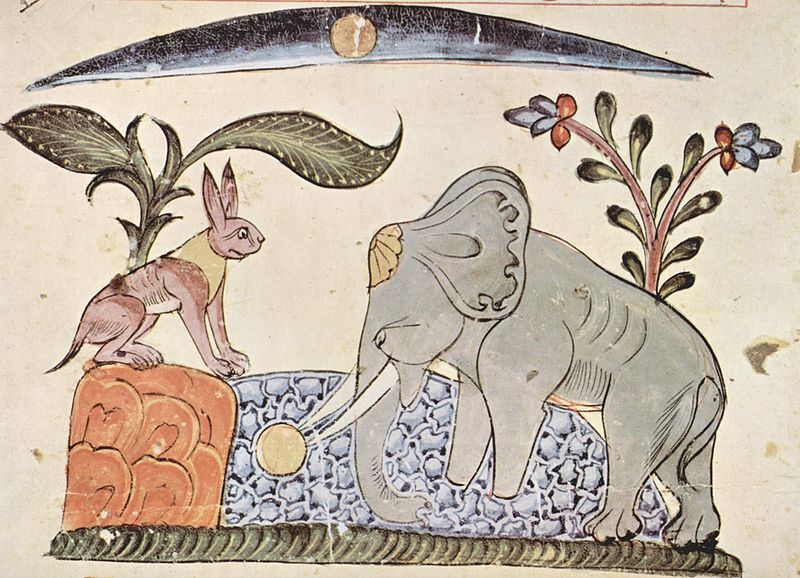 |
| A scene in the Indian fable, Panchatantra, where the rabbit fools the elephant by showing him a reflection of the moon. |
Chameleons seem to have the largest number of myths attached to them, early Christianity associated chameleons with Satan because of their ability to change appearance as Satan does to deceive mankind, it was also believed in some areas of the world that they were "nourished by the air" and did not need to eat. Lizards are sometimes attached to myths about curing blindness, one such myth was that a chameleon talisman would return a blind person's sight. This may have something to do with the very distinctive nature of the chameleon eye.
 |
| Chameleons' eyes can move independently of each other and gives them a 360° range of vision. |
The Australian Blue-tongued lizards, actually skinks (a certain kind of lizard) are known for being pretty mellow, they're easy to pick up, and frequent Australian gardens controlling snail and other pest populations.
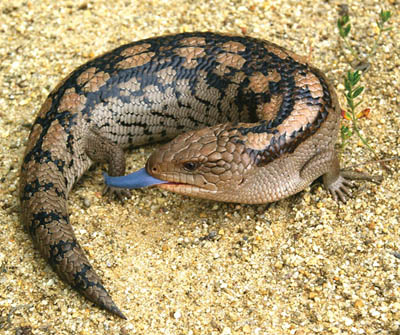 |
| The blotched blue-tongued lizard. Look at that tongue! |
Now from here on out I with not be mentioning anything involving societies that are not American or British. This is because I'm an American and therefore have no expertise or experience with the social mindset of other countries. I know that Australia and probably other countries have very different views about lizards than Americans do, for one thing they have a number of children's TV shows featuring lizards. This may be due to the fact that many Australians have large lizards living in their gardens.
All this means is that I will be focusing mostly on lizards as they are seen in American society.
And of course with that said, I start off with a British book...I said American or British society for this very reason. Alice's Adventures in Wonderland (1865) is the first and pretty much only instance I've found of a lizard mentioned in a well known children's book. Bill the Lizard is depicted as the simple-minded hard worker that's taken advantage of by The White Rabbit and others in the community.
 |
| 1965 illustration of Bill the Lizard being kicked out a chimney by Alice from Alice's Adventures in Wonderland |
Various other reptiles are seen in many of these books, the snake of course being the most prominent, but lizards for the most part are absent.
The 1920's marked the birth of animation in film, specifically silent film. Now I know there are earlier examples of animals in animation but the first largely popular and recognizable character is Felix the Cat.
 |
| Felix the Cat (current design) First seen in 1919 I love Felix, if you haven't seen Felix the Cat cartoons you should. |
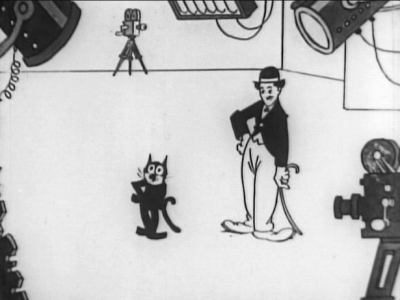 |
| Felix and Charlie Chaplin in "Felix in Hollywood" (1923) |
And of course we can't forget Disney's big breakthrough in Mickey Mouse's Steamboat Willie (1928)
 |
| 1928 Steamboat Willie, the third short in Disney's Mickey Mouse series and one of the first cartoons to have synchronized sound |
By the 1930's silent movies had gone the way of the dodo so to speak and the first technicolor movies were being made. Animals in general did not play a large part in live action movies, probably in part because it's hard to make them do what you want on camera. Wizard of Oz had Toto but dogs are one of the easiest animal to handle and he didn't really do much other than follow Dorthy around and look adorable.
 |
| Wizard of Oz (1939) |
 |
| King Kong (1933) Take note that the woman in this picture is the size of that plane. |
Other than Mickey Mouse, I think the Warner Bro.'s Looney Tunes had the most impact on bringing animals into society at large. Three Looney Tunes shorts were made in the 1930's; Sinkin' in the Bathtub (1930) featuring what I sincerely hope is a monkey,
 |
| Sinkin' in the Bathtub (1930) |
Porky in Wackyland (1938) featuring Porky Pig and the last Dodo bird (and you were wondering why I mentioned some old cliché about dodo birds weren't you),
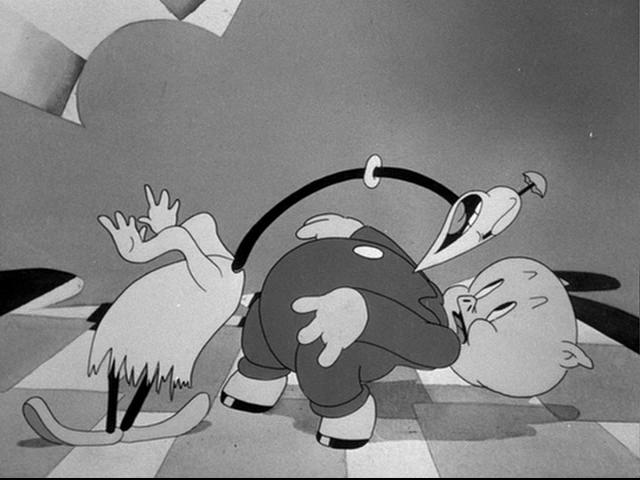 |
| Porky in Wackyland (1938) Racism being what it was in the 30's, 'Wackyland' is in "Darkest Africa" |
| Porky's Hare Hunt (1938) |
Totally off topic but before we proceed I just have to give a shout out to some of the funniest, most talented people in movie history.
_01.jpg) |
| Monkey Business (1931) The Marx Brothers! My favorite is Harpo Marx, (far left) |
In the following decades the practice of using animals as main characters takes off in animation with Disney's Mickey Mouse shorts, Fantasia (1940), Dumbo (1941), Bambi (1942), etc. and more Warner Bro.'s Looney Tunes cartoon shorts.
Lizards, however, continued to remained out of the spot light. In 1951, the animated movie Alice in Wonderland was released with Bill the Lizard making an appearance, and he's used again as the generic lizard in Ratigan's gang in The Great Mouse Detective (1986).
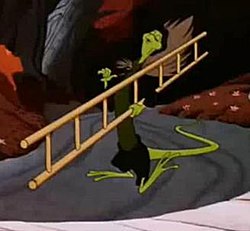 |
| Bill the lizard in Alice in Wonderland (1951) |
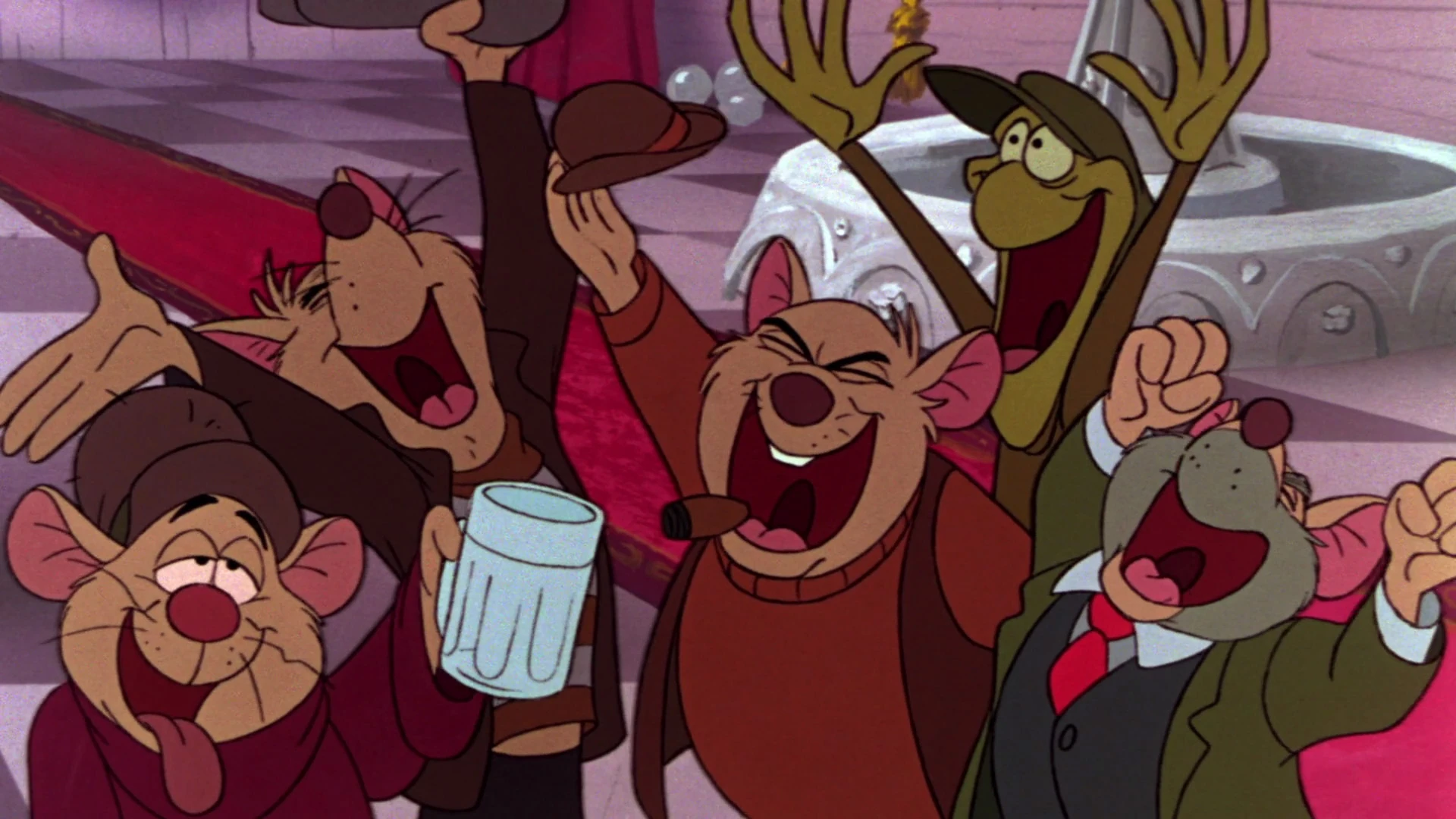 |
| One of these thugs is not like the others... The Great Mouse Detective (1986) |
 |
| The Amazing Spider-Man (1963) |
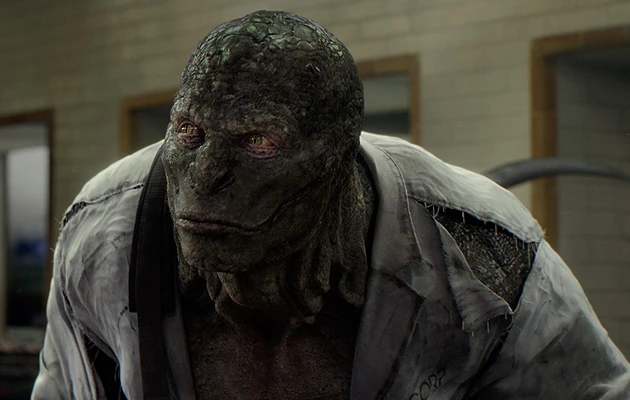 |
| The Lizard, played by Rhys Ifans in The Amazing Spider-Man (2012) |
 |
| 1964 Look how big he is! Iguanas are so cool...I want one. |
Despite these short appearances in film lizards did not become common place on screen until the 1990's. I wouldn't say that they're everywhere but I was very pleased to see Disney making an effort with Joanna and Frank in The Rescuers Down Under (1990),
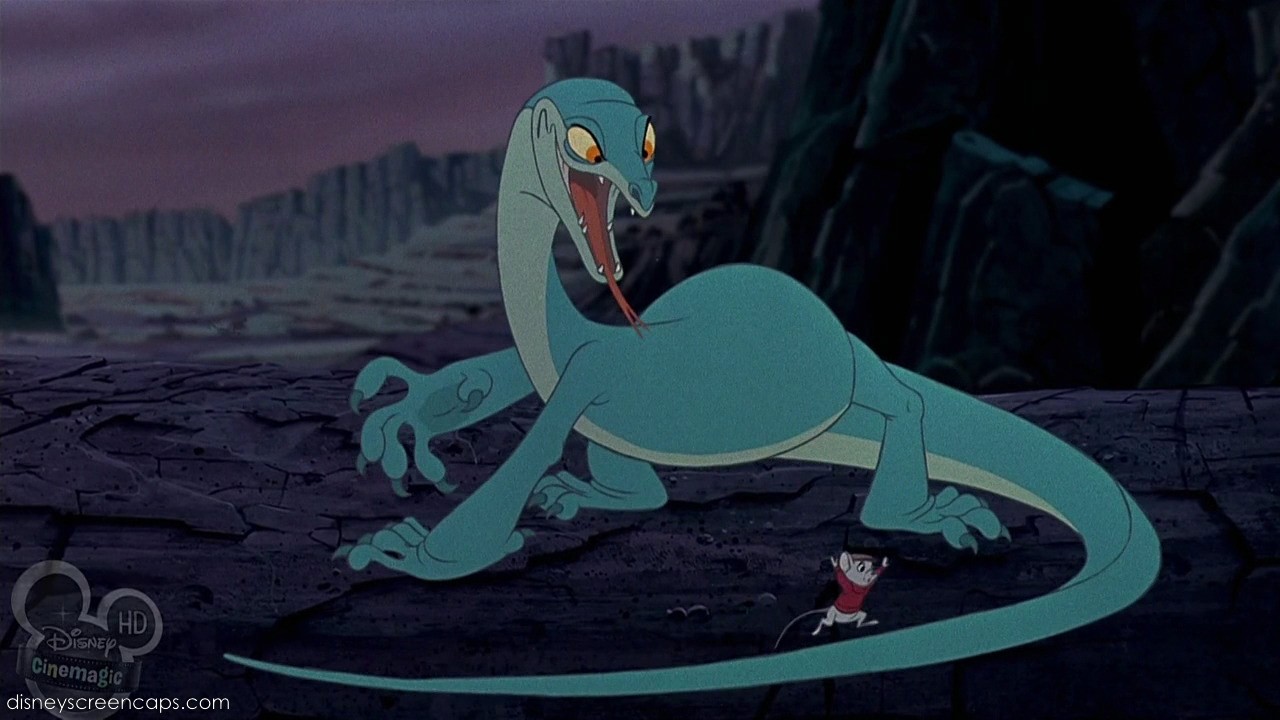 |
| Joanna (a goanna species), the villain's sidekick in The Rescuers Down Under (1990) |
 |
| One of the many monitor lizard species (otherwise known as goanna lizards) found in Australia |
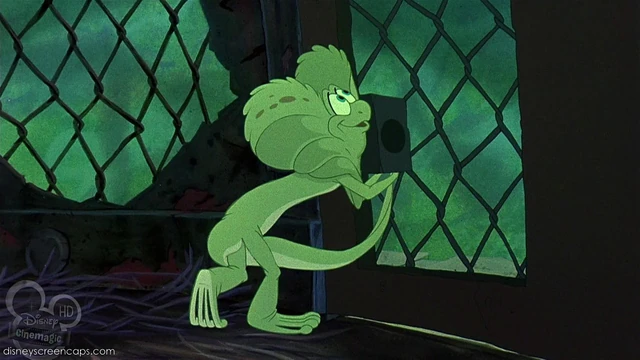 |
| Frank (frill-necked lizard), my favorite lizard character ever, also from The Rescuers Down Under (1990) |
 |
| A real frill-necked lizard from Australia. So cute and angry! |
and Pascal in Tangled (2010).
| Pascal, the chameleon from Tangled (2010) |
 |
| One of the 202 described species of chameleon as of 2015. |
And Rango (2011) came as a total shock with a grand total of four lizard characters, which I'm sure is a first.
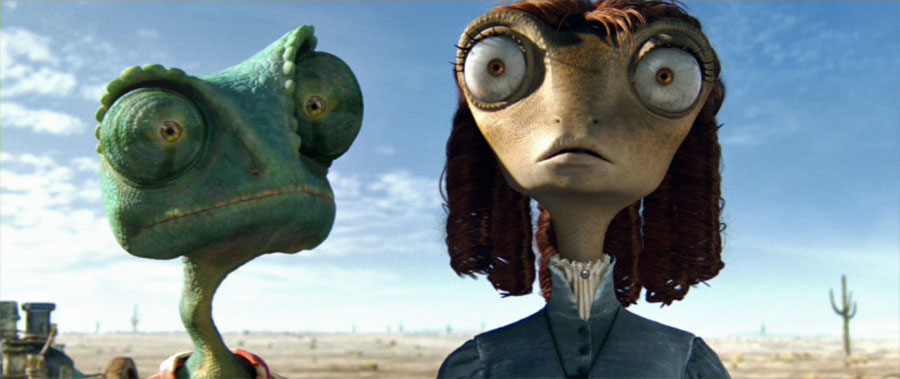 |
| Rango (left) and Beans (right), chameleon and desert iguana (with hair?) respectively. Rango (2011) |
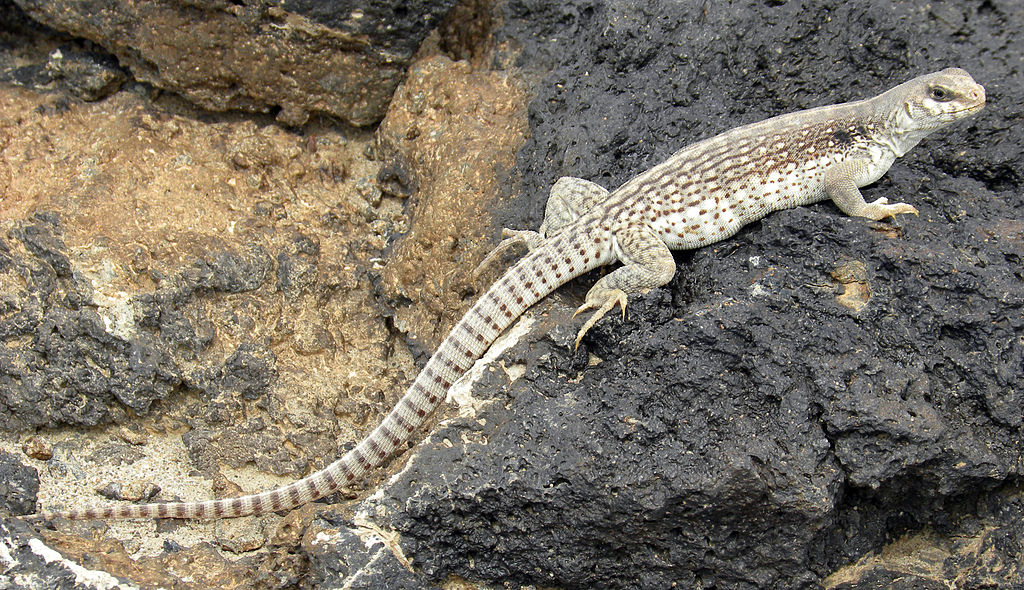 |
| Desert Iguana found in the Sonoran and Mojave Deserts of North America. Such a beautiful species! |
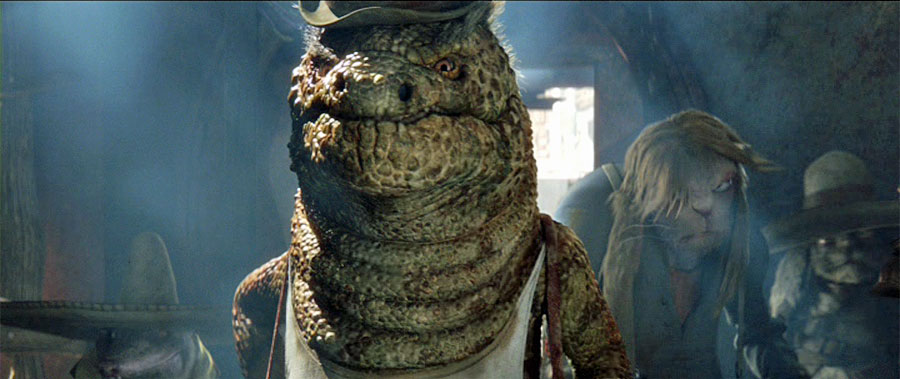 |
| Bad Bill, Gila monster or Mexican beaded lizard. Rango (2011) I'm leaning more toward beaded lizard, what about you? |
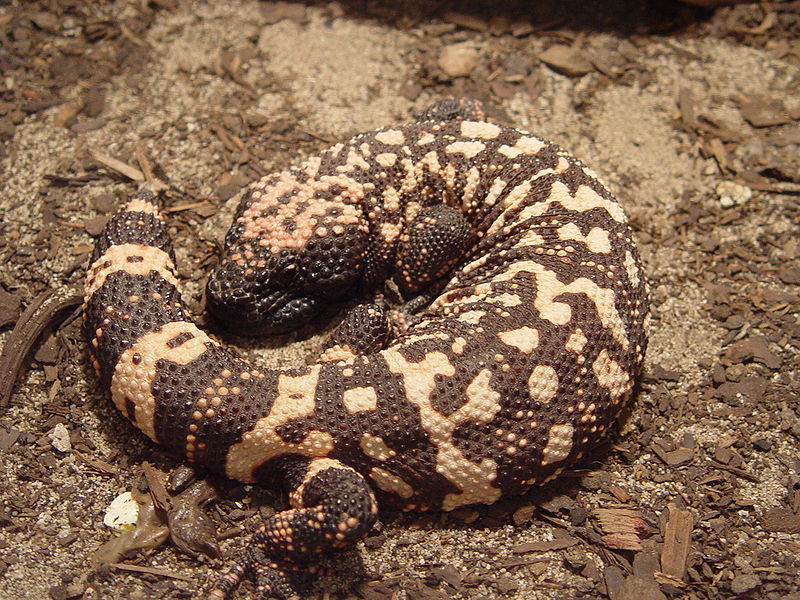 |
| Gila Monster |
 |
| Mexican Beaded Lizard. Its habitat range doesn't fit with the movie, but they gave a desert lizard hair, eyelashes and boobs so I don't think realism was of great concern in the making of this movie. |
 |
| Waffles, a horned lizard. |
 |
| Desert horned lizard, one of the 22 species of horned lizard, many of which can be found in the U.S. Coincidentally, my absolute favorite kind of lizard. |
 |
| A Texas horned lizard, also doesn't fit with the movie's location but the head spikes are more reminiscent of Waffles'. |
I'm also quite happy that the GEICO gecko is so prominent and recognizable. And there were komodo dragons in the last James Bond movie, Skyfall (2012), that was fun...don't worry they were CGI, because honestly if one komodo dragon can take down a buffalo it wouldn't be much trouble to take down a human, safety first and all that.
So as you can probably see from all this, lizards have been sadly absent and overlooked in American society for a very long time and are only just now getting the recognition that I think they so rightfully deserve. Because lizards are amazingly cool; they can run on water, fly through the air, walk up walls, squirt blood from their eyes, curl up like an armadillo, be colored like a Christmas tree, dive underwater, crush other lizard's skulls, etc. Basically they are awesome animals.
I am a little disappointed that most movies reuse lizard species, most prominently chameleons. And the go-to bad guy lizard is usually a Goanna. While these are wonderful lizards I think it's time to let some other species be in the lime light for a change.
I think that part of the reason we just don't see lizards in movies or cartoons is mostly because America is certainly not bursting with lizards, and many of them are fairly small and hard to find. The phrase "out of sight, out of mind" may help to explain this.
It may also have something to due with the fact that there is still not a lot known about many lizards and most people don't know just how large a variety of species there are in the world. It doesn't help that movie makers seem to stick to a few tried and true species.
And lastly, what I think may be the largest reason that lizards are so scarce in American society is that we really don't know what to think of them. As you've already seen, animal characters have always been around so that's not the problem, and it's not that reptiles as a whole are the problem because snakes and turtles, or characteristics of those animals, are seen all over the place in film. Alligators and Crocodiles, not so much but that's understandable, they do have their moments though (The Rescuers (1997) and Tick-Tock the Crocodile in Disney's Peter Pan (1953) come to mind).
The problem is that lizards don't really represent anything to Americans; snakes are fear and decitful, turtles are just peaceful and shy, alligators and crocodiles spell danger, but what feelings do lizards invoke?
I really don't know and that seems to me to be the real problem.
If you liked this or just want to see more pictures check out my Lizard in Society Page .
2018 Update: I've added more pictures, YAY! But other than that, I really haven't done anything new...
.jpg/800px-Aboriginal_Art_Australia(4).jpg)

Nicely done, Anne! This could be a great magazine article.
ReplyDelete